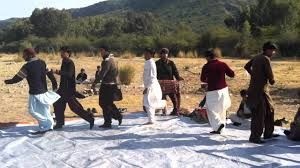PATHANS' TRADITIONAL DANCE (ATTAN)

Attan is a form of dance that originated in the Pashtun regions of Afghanistan and Pakistan, notably in Khyber Pakhtunkhwa (previously called North West Frontiner Prvoince) and Northern Balochistan. Attan began as a folk dance conducted by Afghans in times of war or during weddings or other celebrations (engagements, new year, and informal gatherings). It is now considered the national dance of Afghanistan.

The performance of attan dance in the open air has long been customary in the Afghan culture. Attan is a special type of dance performed by a troupe of 50 to 100 dancers who wave red scarves in the air while musicians beat drums. This dance is common among the Pashtuns and the ruling elite promoted it as the national dance of Afghanistan.

Origin;
Attan is a traditional Afghan dance. It is said to be one of the oldest forms of Afghan Pagan dance. Some identify attan as a religious ceremony of early Zoroastrians placing its origins as early as 2000 BCE, while others have placed even older going back to King Yama's celebration of Nowroz and warriors dancing and circling around the fire. This was later modified into an Islamic dance to allow the dancers to get "closer to God." This virtual attan practiced by many Afghan poets and mystics had even reached to corners of Turkey, known in Europe as the Rumi Dance. It is usually performed with a Dhol, which is a double-headed barrel drum. The dance can be anywhere from 5 minute to 30 minutes long. There are many different regional variations of attan, the most famous being Kabuli, Paktiyaya, Mazari, Shenwari, Kandahari, Sistani, Herati, Pashayi, and Nuristani. During King Yama's time, attan was performed before going to a war because it used to give the army the confidence that they could win the battle. Attan is the national dance of Afghanistan and has spread and become a part of festivals, weddings, and other forms of celebrations, and has its origins from Pashtun areas.




